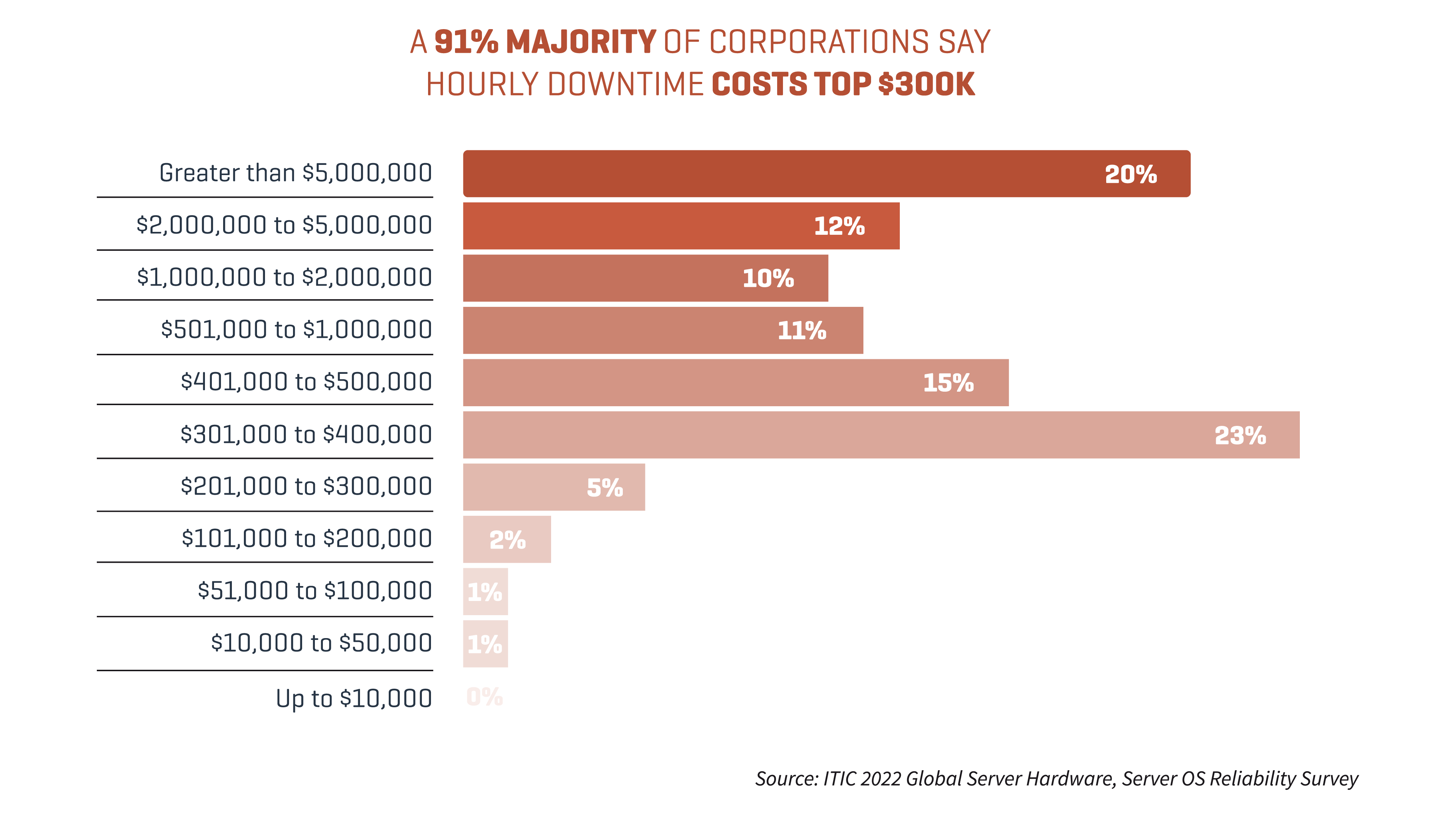

Eric DeGrass
September 19th, 2022
With software becoming more complex year over year, it’s no surprise that downtime costs are on the rise. But what is the true cost of downtime?
ITIC’s latest research shows the Hourly Cost of Downtime now exceeds $300k for 91% of mid-market, and large enterprises. Overall, 44% of mid-sized and large enterprise survey respondents reported that a single hour of downtime can cost their businesses over $1M.

Some businesses and ITOps leaders might assume that their software bugs (or defects) are under control. But this mindset can be costly when new bugs are constantly announced and there is little standardization to manage that risk. According to this article in The Register, things are getting worse in the IT space, not better.
"A growing number of incidents are being attributed to network, software or systems issues.”
There are improvements in some technical areas, but most organizations are digressing in the realm of vendor software defects. These are one of the major causes of IT outages. "Based on the data it has collected, an Uptime Institute report suggests that each year there will likely be at least 20 serious IT outages across the world that cause major financial loss, business and customer disruption, and reputational loss."
In 2022, the number of outages that cost over $1 million has soared. According to Uptime Institute’s 2023 survey, 70% of failures result in at least $100,000 in total losses, a substantial increase from 39% in 2019. But monetary losses aren’t the only factor to consider when assessing downtime costs. Outages also result in a range of less tangible downstream effects, such as:
Reputational damage
Loss of revenue from lost business
Lost productivity of employees
SLA credits to customers
Employee turnover costs
Compliance findings
In severe cases, injury or loss of life
What can businesses and ITOps teams do to better prevent these costly risks? They need to take real proactive action to avoid becoming one of these statistics. According to Gartner data, being more vigilant about preventing IT outages can save the average enterprise $6.5 million every year.
Every day businesses must manage new risks based on newly available data – that’s why we are providing this data. Leaders must continuously drive the requisite changes since "Change Management is Management," and software is constantly changing.
While many ITOps teams are doing the best they can, their efforts are primarily manual and they often lose priority to security vulnerabilities. It’s become almost impossible to manually keep up with the operational defects present in modern day vendor software.
But what solutions exist in the world that solve this costly IT crisis?
Until now, there has never been an automated solution to attain full stack observability (FSO) for vendor defects. With BugZero, it is finally possible to holistically assess your risk of downtime due to software defects.
BugZero is here, breaking new ground in continuous change management of the IT hardware and software supporting your business. As vendors announce new risks to your technology operations, BugZero integrates that information into your change management process, helping you to reduce risk and make better informed decisions.
Learn how BugZero supports your agile business transformation and helps prevent costly outages caused by vendor software defects.


Eric DeGrass
March 14th, 2024


Gary Harrison
March 13th, 2025


Eric DeGrass
March 13th, 2025
Sign up to receive a monthly email with stories and guidance on getting proactive with vendor risk
BugZero requires your corporate email address to provide you with updates and insights about the BugZero solution, Operational Defect Database (ODD), and other IT Operational Resilience matters. As fellow IT people, we hate spam too. We prioritize the security of your personal information and will only reach out only once a month with pertinent and valuable content.
You may unsubscribe from these communications at anytime. For information on how to unsubscribe, as well as our privacy practices and commitment to protecting your privacy, check out our Privacy Policy.